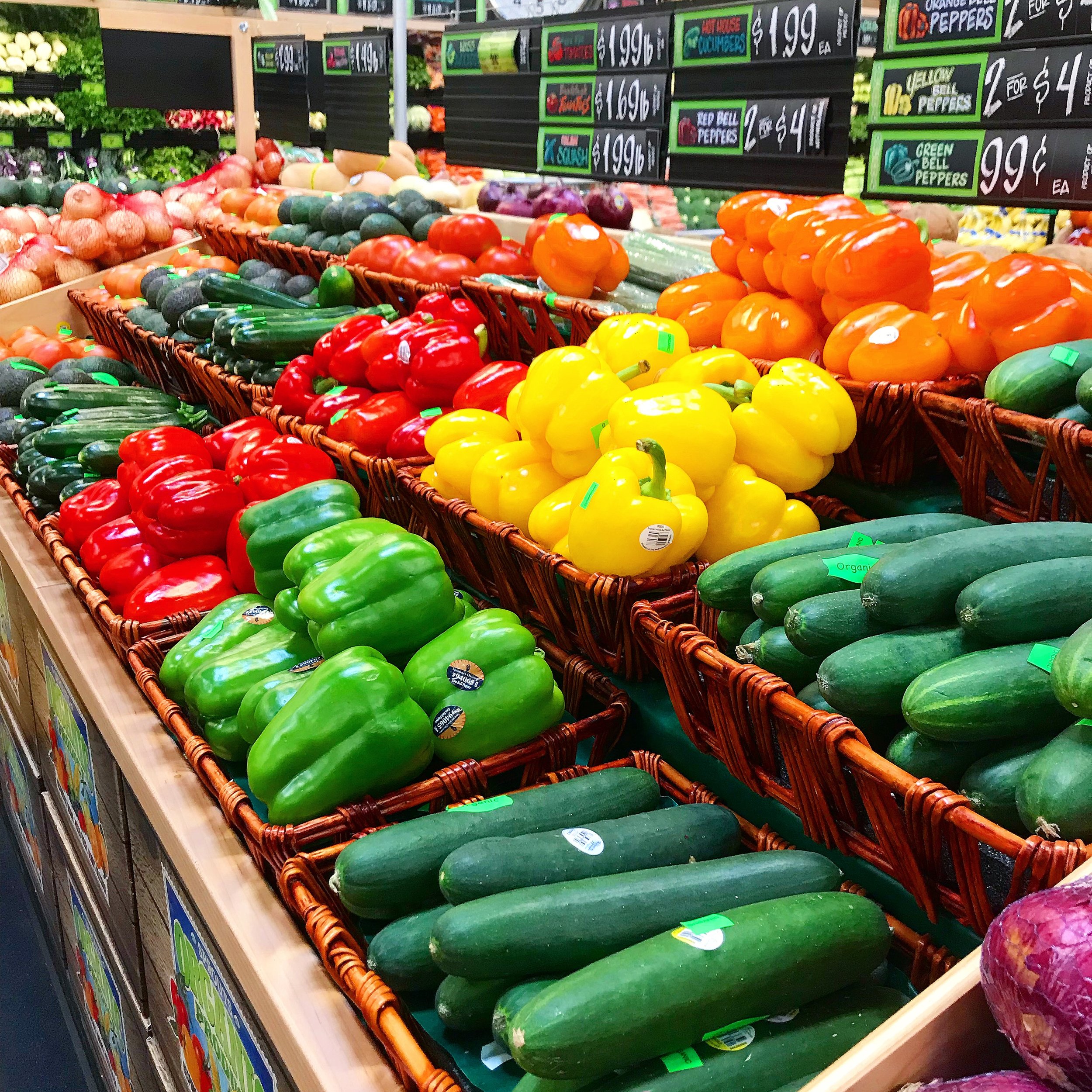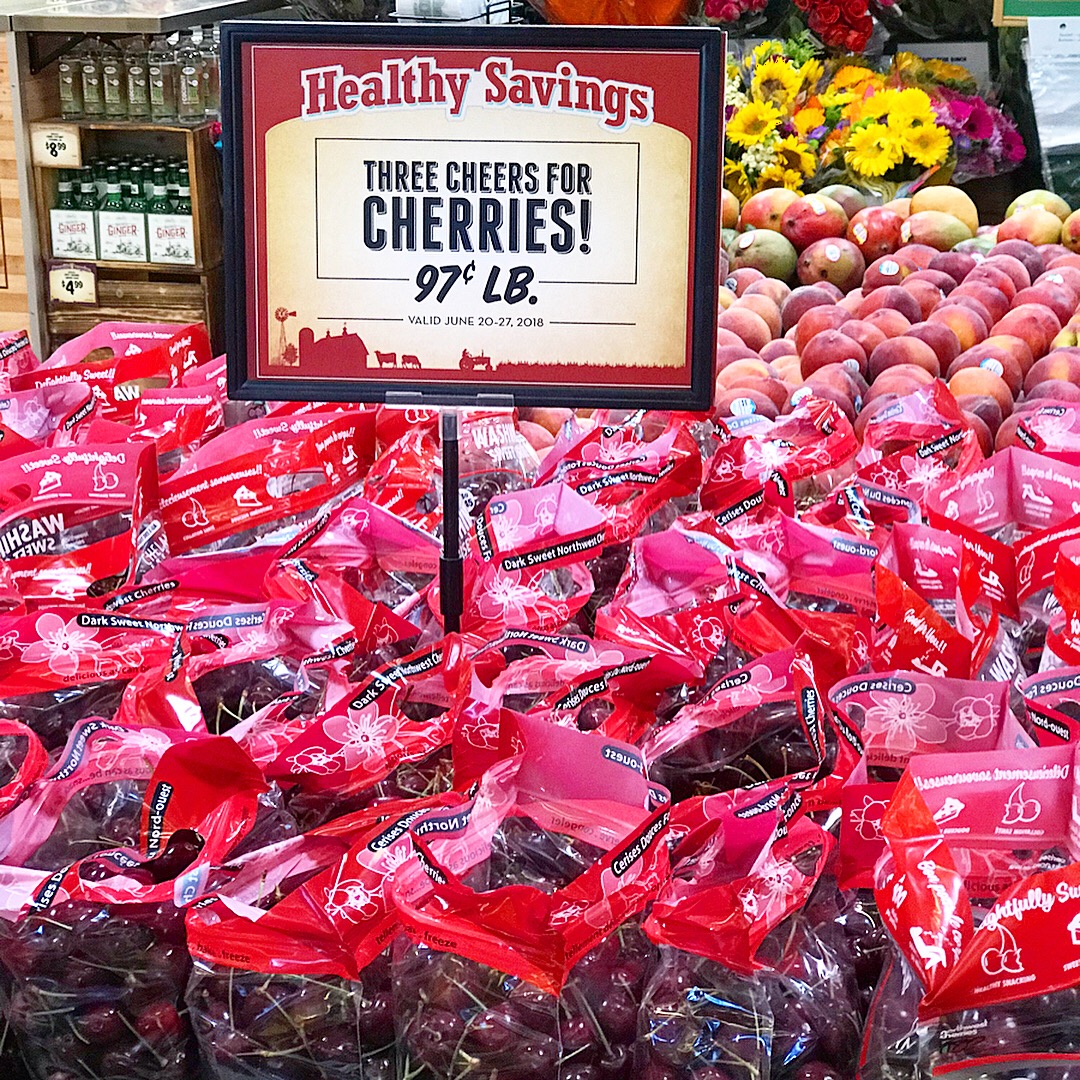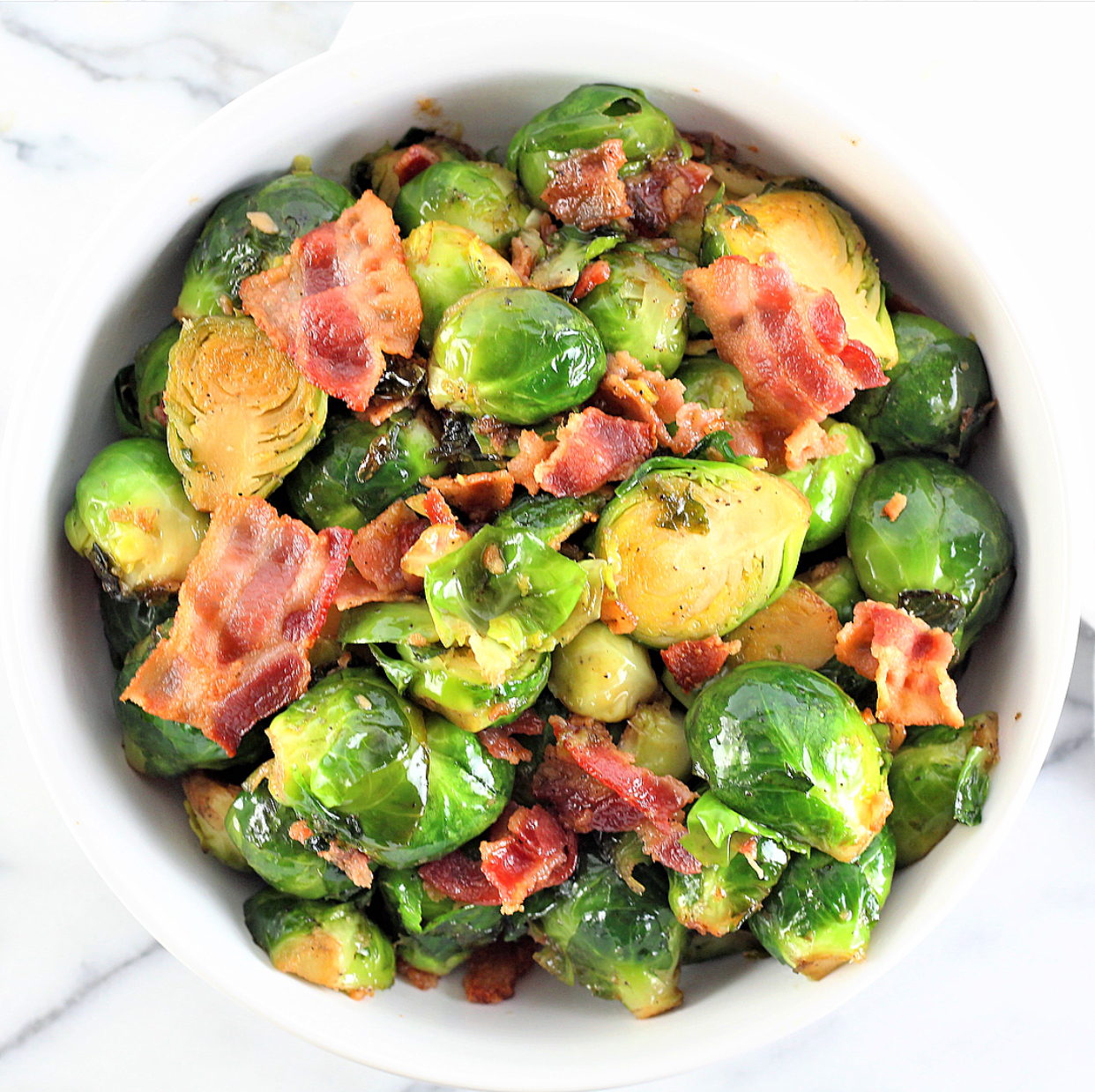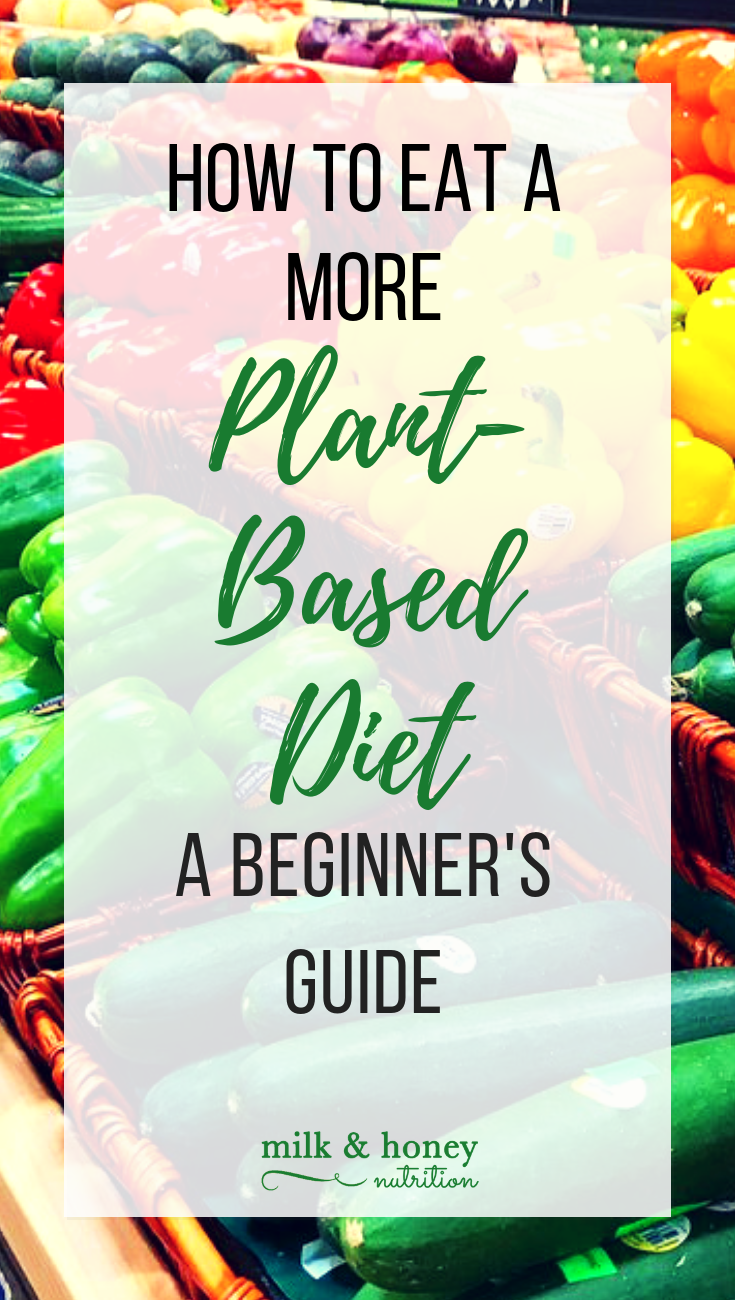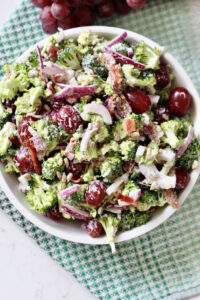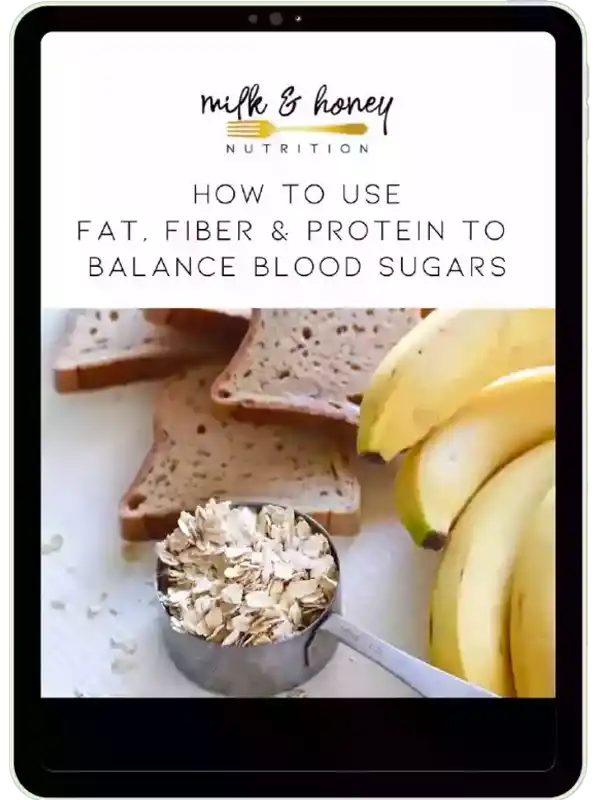This post about How to eat a more plant-based diet: A beginner’s guide was sponsored by Sprouts Farmers Market. All thoughts and ideas are my own.
I’m not a vegan or vegetarian… but I definitely appreciate a good plant based meal and think everyone could benefit from learning how to eat a more plant-based diet. Why? Honestly, plant based meals tend to be cheaper, better for the environment, and we don’t HAVE to eat meat everyday. Plant based protein for some people can be less inflammatory than animal protein and tends to offer more anti-inflammatory fats along with it than animal protein.
I asked you all over on Instagram stories what the term “plant based” means to you and this was definitely my favorite answer (and the one I most agree with):
“To me it means eating mostly plants- veggies, fruits, nuts, seeds, legumes, grains- but not necessarily a strict vegan or vegetarian”
The beauty of the “plant based” movement is you can make it what you want. If you’re not ready to go completely vegetarian (or if you just don’t want to), that’s totally fine… maybe incorporating meatless Monday meals is a good option? Or committing to eating vegetables at every meal for 2-3 days.
One of the many things I love about Sprouts Farmer’s Market is how they help foster the idea that all foods fit, and make healthy eating (however you define that) more affordable for everyone. Not only do they have some of the cheapest produce prices I’ve ever seen, they also offer an amazing in house brand (Sprouts Brand) filled with plant based options. The Organic Coconut Cream is one of my favorite products! Makes a great sub for sweetened condensed milk in baked goods and other recipes!
19 tips from the experts on how to eat a more plant-based diet…
What better way to learn how to do something than from the experts?! Keep reading for some tips from some of my favorite dietitian and healthy living experts!
“Start by stretching your meat. If you’re making tacos, use half ground meat, half chopped mushrooms or nuts, then you can gradually transition to phase out the meat if you want to.”
–Lindsay Livingston, RD The Lean Green Bean
“If you start purchasing meat alternatives, be sure they contain adequate protein while providing some nutrients comparable to what you’d obtain from meat. Many “veggie burgers” or plant-based freezer foods contain next to no protein, and are very rich in fat and fillers. These can be fine every once in a while, but protein is crucial to feel satiated from meals as well as for many body functions.
-Kelly Jones MS, RD, CSSD, Sports Dietitian blogging at eatereallivewell.com
“Create a fun challenge to try out and explore a different vegetable each week. Try out something new or unfamiliar. Look to a Farmer’s Market or CSA for some fresh inspiration.”
–Jennifer Hunt, RDN, LD at Healthy Inspiration
“Start where you are and with what you know. Take a list of favorite meals and make simple substitutions to create plant-based versions of them, and experiment until you find one you love! Plant-based living will soon become second nature.
– Lauren Panoff MPH, RD www.chronicplanet.net
“Aim for variety so that you don’t get bored (plus you’ll get the added bonus of having different / more nutrients). Mix and match cooking styles and shapes of veggies consumed like raw, roasted, stir fried, diced chopped, spiralized, you name it.”
-Dana Harrison, MS Nutritionist at Eats 2 Know
“Grains tend to be more time-consuming to cook, so I love to make a batch on Sunday and repurpose them in different dishes throughout the week. This way I’m not waiting for them to cook each night!
-Samara Abbott, G&G Nutrition Co.
“Prep prep prep!! Having more veggies and fruits on hand and ready-to-eat makes them easier to consume. Whether you’re using them for snacks, putting them on a pan for roasting, or adding to other dishes that might have been veggie less, having items prepped helps! I like to spend time each weekend (you can pick what day works best for you) making sure we have clean and chopped produce for the whole family. Those weeks that I’ve skipped? Our plant consumption decreases. Definitely my number one tip!”
-Katie Heddleston MS, RD Katieheddleston.com
“My favorite tip on how to make plant foods center stage on your plate is to use the New American Plate put out by the American Institute for Cancer Research (AICR) and have 2/3 of your plate come from plant foods.”
–Wendy Kaplan, RDN Food 4 Health RD
“Load up on beans and edamame! I use my Instant Pot to cook a large batch of dried beans, which I can then freeze in 1/2-cup servings. Having cooked beans and shelled edamame in my freezer makes creating plant-based meals quick and easy. Add a cooked whole grain, like quinoa or farro, salad greens, additional veggies, and a vinaigrette and lunch or dinner is served.”
– Jessica Cox Ivey, Registered Dietitian and Chef
“Plants perish quickly so take time to store them properly. Store asparagus upright in shllow water, place paper towels in leafy green containers to absorb extra moisture, store potato’s in cool dry place. Chop up veggies as they come in for quick go-to snacks. Just a little proper prep can save you tons of time and money.”
–Shena Jaramillo MS, RD jnutrition.info
“I think a lot of it has to do with finding fresh ideas for dishes you can get excited about. If you’ve spent a lifetime cooking meals with meat at the center of the plate, you need to get a repertoire together for more plant-forward eating. Find inspiration in a vegetarian cookbook, flip through magazines and pull pages of plant-based recipes, and subscribe to a blog or two that features a lot of meatless meals.”
–Katie Morford, MS, RD Mom’s Kitchen Handbook
“Take the time to give vegetables and other plant based foods the care and flavor you would meat. Make a delicious marinade or sauce, slow roast them, chop them in different shapes and sizes to try new textures. Plants offer so much to a dish if you just give them a little attention!”
– Sarah Gold Anzlovar, MS, RDN, LDN www.sarahgoldrd.com
“Flavor plant based proteins and veggies with herbs and spices. I love sautéing canned black beans in coconut oil plus curry leaves (if available), cumin seeds, cumin and coriander powder, and turmeric. Dress them with lemon juice and freshly chopped cilantro. They make a great addition to a salad, Buddha bowl, or tacos/burritos.”
–Jenifer Tharani, MS RD. Archaicnutrition.com
“When meal planning for the week, plan a recipe or two that features vegetables prepared in a new-to-you or fun way. This will add excitement to your typical week of meals and introduce potential new favorites to your typical meal rotation. It also puts the focus on the produce at that meal where the new item is served.”
-Tara Rochford, RDN Treble in the Kitchen
“Use convenient herbs and spices to add flavor to plant-based foods. Try ginger paste or “jarlic” (garlic in a jar) to season greens, broccoli, beans and grains. Add cumin or salsa to black beans or lentils for more flavor.”
-Lisa Andrews, MEd, RD, LD Sound Bites Nutrition
“For 2 weeks try to have a serving vegetables with every meal. This exercise does two things, first it gets you in the habit of always planning on buying and prepping veggies. Second, it helps turn veggies into the main course and your protein and starches the sides. If you stick to developing the habit, eventually you’ll find a meal isn’t a meal unless there’s veggies!
-Suzanne Smith, Sports Dietitian suzannejsmith.com
“Pair fruit and vegetables with a (healthy) dip – bonus for one made with more fruits and vegetables such as spinach and artichoke 😉 Everyone likes to dip things, especially kids, and I find adults do as well.”
-Theresa Diulus, MPH, NTC theresadiulus.com
“As a plant-based chef and organic produce grower, I encourage people to start with what they love! If they’re a big fan of beef bolognese, I’ll suggest adding in some diced or grated carrots, peppers, spinach and/or summer squash. When this feels comfortable, swap the beef for ground chicken or turkey. Then swap in garbanzo beans for a completely plant-based meal. If their salads usually consist of romaine lettuce, tomatoes and cucumber with ranch dressing, I’ll suggest other add-ins and show how to make a fresh herb vinaigrette. A few changes at a time, focussing on what’s being added rather than what’s not has been most successful!”
-Catherine Brown, CDM/CFPP, plant-based chef & culinary nutritionist at A Seat at My Table
“I always recommend getting a good greens/vegetable saver. I love the OXO one as it keeps greens (even spinach/arugula!) fresh for up to 2 weeks so you always have something green on hand to use in a meal (and reduces waste)!”
-Kristen Link, Integrative Nutrition Health Coach wellnessbykristen.com

